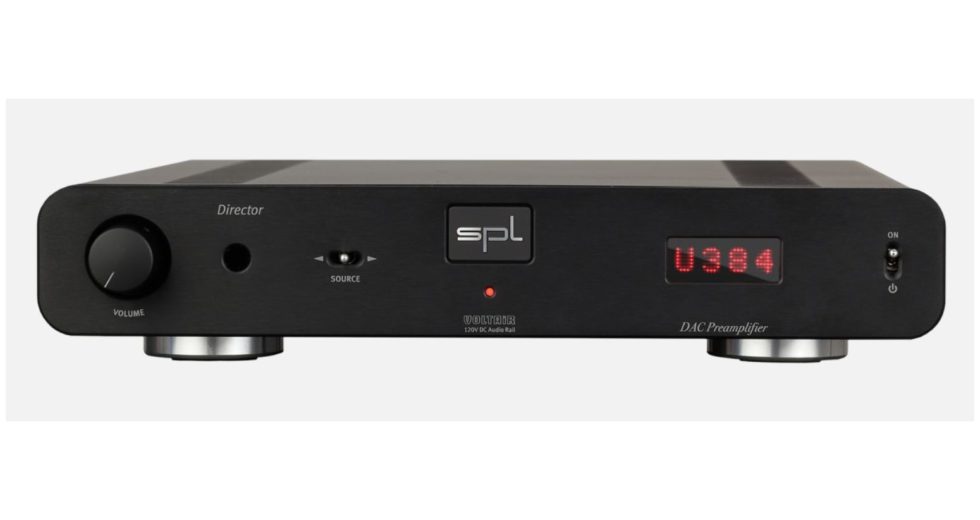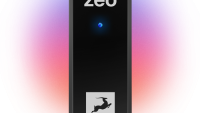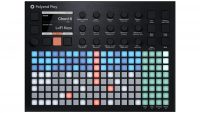
DA Converter and Preamplifier
The Director is our remote controllable reference preamplifier. Its digital to analog converter is unique. It is the first high voltage DAC in the audio world. The converted analog signal unfolds directly within our VOLTAiR technology.
Being the centerpiece of your stereo the Director receives all sources. Analog sources are connected via balanced XLRs or via RCAs (e.g. the phone preamplifier Phonos), or digital via USB (PCM up to 384kHz and DSD up to Double Rate) as well as coaxial, optical or via AES.
The outputs are provided as balanced XLRs and RCAs. The specialty here is that you can disengage the volume control for each output seperately allowing the connection of a power amplifier (volume engaged) and a headphone amplifier like the Phonitor e (volume disengaged).
It is the heart of the stereo system to which all components are being connected: sources, amplifier, active speakers, headphone amps, phono preamplifier etc. It determines what, with what and how loud we hear.
Preamplifier
Director is a full-fledged stereo preamplifier with an extraordinary DA converter. There is provision for connecting up to six stereo sources – two in the analog domain offering RCA connectors for e.g. phono preamplifier like the Phonos and four in the digital domain with USB, AES, Coaxial and Optical connectors.
At the output side a power amplifier or active loudspeakers can be connected balanced (XLR) and unbalanced (RCA). We recommend the Performer s800 as power amplifier in order to maintain a 120V Rail audio chain from the DAC to the speakers for best audio performance.
Volume
Volume is controlled strictly in the analog domain – for good reason. Commonly volume is regulated in the digital domain as part of a chip’s functionality. Apart from being inexpensive the down side is that the playback at lower volume than unity gain (0dB) is compromized due to a shrinking bit resolution. And as you never listen with the preamp turned up fully clockwise you always hear at a lower bit resolutions with diminished audio fidelity. It makes not a lot of sense to listen to high res audio then, does it? As this is not acceptable we opted for an analog solution that gives you infinite resolution at all listening levels. We use a motorized ALPS RK27 “Big Blue” potentiometer with excellent feeling and channel matching. Being motorized Volume can be remotely controlled.
A great feature is a small DIP switch at the bottom of the Director. DIP switches number 3 and 4 allow to decouple the volume control and to deliver a unity gain output at the XLR or the RCA output or both. You can connect a headphone amplifier like the Phonitor e and have individual volume control for the headphones. Another application is that connection of a digital recorder.
Sources
On the front of the Director is a toggle switch for the selection of the input source. Toggle to the left to select the previous source and toggle to the right to select the next source. The selection is shown in the dot matrix display: IN 1 and IN 2 for the analog inputs and USB, AES, COAX and OPTI for the digital inputs. The detected sample rate of the selected digital input is displayed after about 2sec. (e.g. U384 = USB input, 384kHz sampling rate). The input source can also be remotely controlled.
DA Converter (DAC)
The Director is equipped with the best Digital-to-analog converter (DAC) we ever made. It sports four digital stereo inputs (USB, AES, Coaxial and Optical) and supports PCM audio as well as DSD audio playback.
DAC with VOLTAiR
We have been looking at many DAC designs and we have always wondered why all the innovations happen on the digital side. Almost no innovation is to be found on the analog part for the DAC. Maybe that is because most designers have a background in digital engineering and as a result they apply only standard ‘cook book’ designs on the analog side. We, having a little background in analog, find cook book design out dated and boring. We believed we can do that part much better and –simply put– revolutionize the design of DACs. Here is how:
The output of a DAC chip is either a voltage or current (as in our design) that represents the value presented on their digital inputs. This output is to be converted to voltage (in case of a current output) and filtered with a low pass filter. These two stages are typically designed with the same reference voltage of the DAC chip at e.g. 5V. Think about this: the first stage that the analog waveform is exposed to has a headroom limited to 5V. Now imagine this to be 120V! This is what we have done in the Director. The current to voltage conversion as well as the low pass filter are both running on a 120V rail – our VOLTAiR technology. The incredible headroom and the enormous power lets the analog wavefront come to life and evolve without limitations. And that is audible. Very much so.
AES/EBU
AES (or more precise AES3 or AES/EBU) is a standard for the exchange of digital audio signals between professional audio devices. AES3 was jointly developed by the Audio Engineering Society (AES) and the European Broadcasting Union (EBU). An AES signal can carry two coded PCM audio channels of up to 192kHz sampling rate. The standard is defined under IEC 60958 Type I. Type I connections use balanced, 3-conductor, 110-ohm twisted pair cabling with XLR connectors.
Coaxial (S/PDIF)
The consumer grade variant of AES is SPDIF (Sony/Philips Digital Interface). Worldwide it is the most commonly used method for digitally interconnecting audio equipment – typically the digital output of a CD player. The connector is labelled “Coaxial”. Like AES it can carry two coded PCM audio channels up to 192kHz sampling rate. The standard is defined under IEC 60958 Type II. Type II connections use single-ended, 2-conductor, 75-ohm coaxial cable with RCA connectors.
Optical (TOSLINK)
Type II Optical connections use optical fiber with F05 connectors, which are more commonly known by their Toshiba brand name, TOSLINK. Type II Optical connections are also used in consumer audio and are also called “Optical”. Like AES and Coaxial it supports sample rates up to 192kHz for two coded PCM audio channels.
USB
The most interesting input is the USB port for connection with a computer. The Director supports both audio formats PCM and DSD audio. For PCM audio sample rates are supported up to 384kHz and for DSD audio sampling is supported up to DSD2 (double-rate DSD) also known as DSD128 (128 times the CD sampling rate of 44.1kHz).
When connected to a PC the Windows driver must be installed to playback audio files with a higher resolution than 44.1kHz or 48kHz. In a Mac environment the install of a driver is not needed. Apple natively supports USB class 2 with sample rates up to 384kHz.
DSD over USB
SACD or BluRay players typically do not put out the DSD stream for copy protection reasons. This means that an existing SACD/BluRay player can only be connected to the analog inputs of the Director. To playback (non-encrypted) DSD files from a computer can only be handled over USB. Specific software players like Audirvana Plus (Mac), Channel D Pure Music (Mac), J River Media Center (Mac/PC), Signalyst (PC), Foobar2000 (PC), JPlay (PC) support DSD playback.
The USB audio 2.0 specification defined several formats for the more common PCM approach to digital audio, but did not define a format for DSD. In 2012, representatives from many companies and others developed a standard commonly known as “DSD over PCM”, or “DoP” to represent and detect DSD audio within the PCM frames defined in the USB specification.
PCM & DSD
Pulse-code modulation (PCM) is a method of encoding sampled analog signals generally used for uncompressed audio. It is the standard form of digital audio in computers, Compact Discs, digital telephony and other digital audio applications.
Direct-Stream Digital (DSD) is the trademark name used by Sony and Philips. They developed DSD for SACD (Super Audio CD) which should have become the designated successor of the CD (that was also designed by these two companies).
Since PCM and DSD are digital formats, there are other ways to play back high-resolution music. The highest possible resolutions are available on download portals like HD Tracks, Qobuz, HIGHRESAUDIO, primephonic, HDMusicStore, Bleep, Cybele, Gimell, HD-Klassik, 7 Digital etc.
DSD differs fundamentally from conventional PCM. While in a PCM stream, the amplitude of the analog signal is sampled regularly at uniform intervals, and each sample is quantized to the nearest value within a range of digital steps, DSD stores a sequence of single-bit values before applying a “decimation” process that converts the signal to a PCM signal.
A PCM stream has two basic properties that determine the stream’s fidelity to the original analog signal: the sampling rate, which is the number of times per second that samples are taken; and the bit depth, which determines the number of possible digital values that can be used to represent each sample. In the Director PCM audio is supported up to sample rates of 384kHz (8 times 48kHz) and bit resolutions of up to 24 Bit.
In DSD audio the fidelity is determined by the rate of the 1-bit stream. The Director supports up to double-rate DSD also known as DSD2 or DSD128. Single-rate DSD is the typical SACD/BluRay resolution and it is referred to as DSD1 or DSD64 because the sample rate is 64 times that of CD (44.1kHz) namely 2.8224 MHz. DSD2 samples at 5.6448 MHz, twice the SACD/BluRay rate. This is also referred to as DSD128 because the sample rate is 128 times that of CD.
The long-term average of a DSD signal is proportional to the original signal. DSD uses noise shaping techniques to push quantization noise up to inaudible ultrasonic frequencies. In theory, it only requires a lowpass filter to reconstruct the original analog waveform. In reality it is a little more complex. A one-bit signal cannot be dithered properly: most modern sigma-delta converters (like the DAC in the Director) are multi-bit.
Because it has been extremely difficult to carry out DSP operations (for example performing EQ, balance, compression) in a one-bit environment, and because of the prevalence of solely PCM studio equipment such as Pro Tools, Nuendo, Cubase, Logic, the vast majority of SACDs and DSD downloads—especially rock and contemporary music, which rely on multitrack techniques—are in fact mixed in PCM (or mixed analog and recorded in PCM) and then converted to DSD in mastering. It is kind of rare to find or identify a recording being multi-tracked and mixed in the analog domain. Merging Technologies has invented the DXD format with which theoretically a production can be recorded, mixed and mastered entirely in the DSD domain.
Remote Control
Volume as well as input selection can be remotely controlled using any existing infra-red (IR) remote control. The cool part is that the Director learns your remote! Take, for example, the remote control of the CD player. Out of the many buttons there are maybe four you hardly use if at all and that do not directly trigger a function on the CD player. Alternatively you can use the Apple remote control which is small, slick and offers just the buttons you need. Assign Volume Up / Volume Down to two buttons and Next Input / Previous Input to two other buttons and let the Director learn them. The procedures are described in the manual.
IDR 23.374.000





